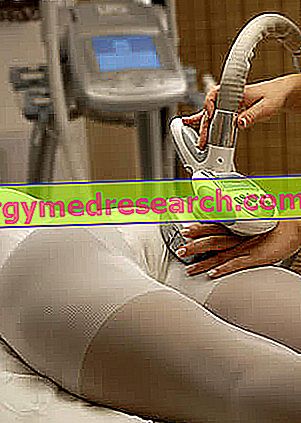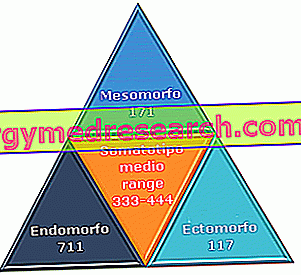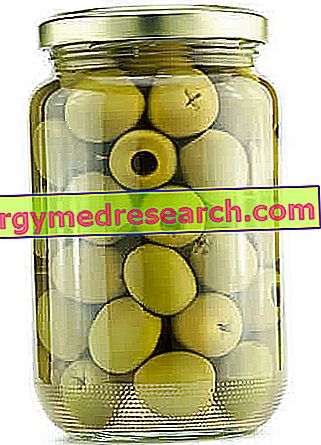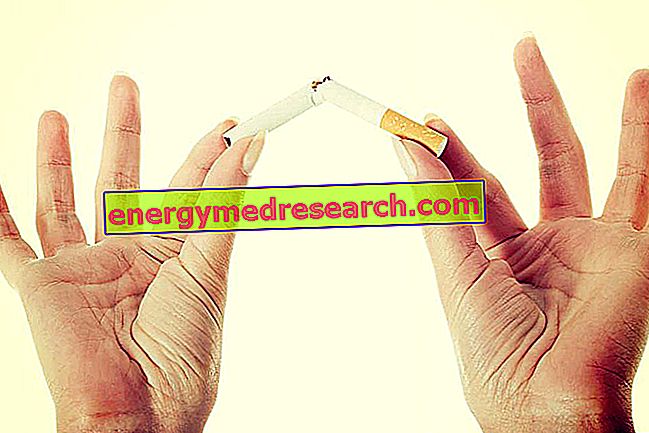Common cellulite is an imperfection, not a pathology. It can be considered a disease only in the most severe cases or in the presence of an infection (infectious cellulitis).

The mechanism of cellulite formation is based on the micro-circulatory stasis of the hypodermis and on the alteration of the exchange of liquids between plasma and tissues.
Cellulite occurs more frequently in the legs of overweight women, although it can affect other body areas, male sex and does not spare many thin or normal-weight women.
Cellulite is characterized by three closely related phenomena:
- Water retention and slowing of blood-lymphatic flow
- Rupture of the fat cells with discharge of the content in the extracellular matrix
- Alteration of collagen fibers around the cells
The predisposing factors are different: genetics, sedentary lifestyle, nutrition, hormonal flows, clothing, lifestyle, pathologies etc.
Cellulite should not be confused with edema and even less with excess fat.
What to do
- Improve blood circulation and prevent water retention or oedematous forms. Since not everyone has the same functional and metabolic characteristics, the efficiency of peripheral blood circulation can also change from one subject to another. Who has a greater predisposition should intervene with more timeliness and incisiveness on improving circulation. Sometimes cellulite is one of the consequences of venous insufficiency
- Follow a proper diet (see below)
- Practice regular physical activity, preferably aerobic and with medium intensity
- In the case of endocrine disorders or dysfunctions, maintain normal levels of estrogen, corticosteroid, prolactin and thyroid hormones
- If necessary, prevent or treat chronic constipation. It is believed that severe constipation of the colon can exert significant pressure on the surrounding vessels, compromising venous return (especially in certain positions)
- Dress appropriately, with comfortable clothes and shoes; they must promote normal circulation
- Stop smoking
- Stop overeating with alcohol
- Take correct postures, especially in a sitting position
- In case of pregnancy, emphasize all the behaviors listed above
- If cellulite is severe, adopt:
- Natural remedies
- Pharmacological remedies
- Alternative medical treatments (see below)
What NOT to do
- Acquire improper lifestyle and eating habits already from early childhood
- Neglecting any bad circulation
- Following an incorrect diet (see below)
- To smoke
- Abusing alcohol
- Being sedentary and not practicing motor activity
- Do not compensate or cure roughly certain hormonal imbalances
- Take the contraceptive pill (only in case of hypersensitivity to estrogen)
- Neglecting constipation, especially when it is severe
- Dress with constrictive clothes (eg jeans) and uncomfortable shoes (eg high heels)
- Stay too long sitting, crossing your legs or taking other positions that can make your circulation worse
- Start treating cellulite when it is already widely formed
What to eat
- In case of overweight, the diet for cellulite must be low-calorie. Sometimes weight loss (fat reduction due to proper diet and sport) is sufficient to dramatically reduce cellulite
- Follow a diet rich in liquids and drink a lot. Make at least 1 milliliter of water with each calorie taken with the food. 1.8-2.2 liters per day are sufficient for an average adult. The most water-rich foods are:
- All the fresh raw ones: fruit and vegetables are particularly suitable, but we must not forget the role of meat and fish
- Milk and yogurt: it may seem trivial but a cup of milk and two jars of yogurt a day bring about ¼ of the water needed by an average adult
- First course soups: soups and soups of legumes or cereals can also supply 300ml of water at a time
- Semi-liquid second courses: these are fish and meat soups. To a lesser extent than the first courses, they can significantly increase the amount of water in the diet
- Centrifuges, smoothies, milkshakes, frozen, popsicles, sorbets and water-based ice creams: without added sugar and fat, they contribute to bringing significant amounts of liquids
- Prefer low-sodium foods: they are all those without cooking salt. To follow a low-sodium diet it is sufficient not to season the foods and avoid the preserved or seasoned products
- Consume foods rich in potassium: it is the main intracellular cation and counteracts the strength of extracellular sodium. The balance of the two favors a correct distribution of the liquids outside and inside the cells. The best sources of potassium are vegetables and fruit
- Eat foods rich in magnesium: this microelement has an alkalizing effect and, together with potassium, contributes to maintaining the acid base balance. The foods richest in magnesium are: fibrous portion of cereals (for example bran), cocoa, some oil seeds (almonds, cashews, pistachios, hazelnuts, walnuts, etc.), lentils, artichokes, etc.
- Encourage the intake of antioxidants: they help to hinder cellulite and some have a beneficial effect on blood vessels. These are of the saline, vitamin and polyphenolic type:
- Vitamin antioxidants: vitamin A, vitamin C and vitamin E. They abound in fruit, in vegetables (red or orange in color and with a sour taste) and in the fatty portion of many vegetables (wheat germ, avocado, extraction oils, etc.)
- Polyphenolic antioxidants: simple phenols, flavonoids, tannins. They feature fruit, vegetables, wine, seeds, etc.
- Saline antioxidants: they are zinc and selenium; they abound in meat and dried fruit
- Among the carbohydrate-based foods, prefer those with a moderate or medium glycemic index, in adequate portions
What NOT to Eat
- High-calorie foods that can promote adipose accumulation
- Dehydrated foods rich in sodium or sodium glutamate. Of animal or vegetable origin, these have an insufficient water content and often bring a lot of salt. Some are:
- Of animal origin: sausages (salami, sausage, etc.), salted and seasoned (cured ham, speck, culatello, etc.), cod, bottarga, salted anchovies, smoked salmon, cheeses, etc.
- Of vegetable origin: dehydrated fruit, preserves, jams, candied fruit, etc.
- Rich in stock cubes: Chinese food, soups, etc.
- Others: potato chips, peanuts, nachos, etc.
- Very savory condiments: in addition to the salt itself, also soy sauce and other packaged sauces
- Foods lacking in useful mineral salts: it happens above all with the boiling of the already cut foods. The salts are diluted in the liquid and lost accordingly
- Foods poor in useful antioxidants: cooked and preserved. Many biologically active molecules lose their function when they are degraded by cooking or undergoing oxidative stress
- Junk foods: these are rich in additives, pharmacologically active molecules such as nerves, sugars, salt, etc. This category includes many of those mentioned so far but also: chocolate bars, biscuits, crisps, all fast food, sweet drinks, etc.
- Foods with a high glycemic index and in excessive portions. The mechanism is not clear but it seems that this habit is correlated with water retention and the onset of cellulite
Natural Cures and Remedies
Some plants with anti-cellulite action are:
- Birch: use the leaves and the mother tincture to be taken especially in the form of herbal tea; contains triterpene saponins, essential oils, flavonoids, tannins, vitamin C and resins
- Red vine: the leaves are used to be taken especially in the form of herbal tea; contains flavonoids and anthocyanins
- Centella asiatica: use the leaves to be taken especially in the form of herbal tea; contains asiaticoside and madecassicoside, Asian and madecassic acid, amino acids, quercetin, essential oils
- Others are: blueberry, sweet clover, butcher's broom and horse chestnut
Diuretic foods such as:
- Artichoke, fennel, endive, chicory, cucumber, pineapple, melon, watermelon, peaches, strawberries
Pharmacological care
The products used for the treatment of unsightly cellulite are not real drugs.
These are revitallising skin, capillary-protective, anti-inflammatory and anti-edema molecules.
Some are for oral, topical or injection use (see mesotherapy).
The only drugs used to treat cellulite are those intended for the treatment of the infectious form.
These are essentially antibiotics to be taken orally as:
- Flucloxacillin (eg Flucloxacillin GNT)
- Phenoxymethylpenicillin (eg Fenoss FN)
- Benzilpenicillin (eg Benzil B, Penicillin G)
Prevention
It starts from childhood and is based on a series of measures that act first of all on improving the general physical condition.
- Avoid fat accumulation
- Optimize circulation by practicing regular physical activity
- Avoid a diet rich in foods with a high glycemic index and excess carbohydrates in general
- Some suggest limiting the intake of products of animal origin, which may contain traces of steroid hormones (estrogens). The most indicative example could be that of meat homogenized, even if the control bodies guarantee the absence of these molecules in foods
In adulthood, all the precautions mentioned in the previous chapters apply.
Medical Treatments
Cellulite can have many causes and, in addition to the remedies we have already discussed, the only treatment that lends itself to any circumstance is massage.
Cellulite caused, or significantly aggravated, by a lymphodematosic form can be improved by:
- Mesotherapy with vasotonic products: it is applied by injecting solutions of drugs having a positive effect on the tone and permeability of the vessels. The affected area is that affected by cellulite
- Iontophoresis: it is a form of injection without a needle. It allows a drug to pass through the epidermis thanks to the application of a continuous current. The most used molecules are:
- Aminophylline
- Carnitine
- escina
- Pressotherapy: consists in applying an external pressure on the area to be treated, through a tool designed specifically for this purpose. This looks like a sort of band that can be installed on the legs and arms



